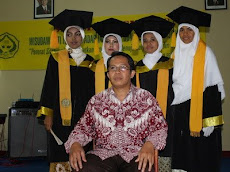
by Nofel Nofiadri
Introduction :
Students like talking to the teacher because it makes them feel important and that they are getting value for money. While this is fine in a one-to-one lesson it is no good in a group because while one student is monopolizing the teacher/conversation everyone else is losing out.
Pair work or group work has the power to allows all student to speak and empowering each one speaking skill.
Pair Work/ Group work :
How:
1. Make a list of pairs of names before the lesson stars or while the students are coming in, or just tell them when the time come: “Joni, you work with Usman; Cici, you’re with Saleh this time”.
2. If there is an odd number of students make a group of three but break them up later in the lesson and put them into paris with someone else so they get more chance to speak.
3. You could put them in small groups to start with if the activity allows. You could even make the activity a competition in small teams if the activity allows, seeing which team gets the most answers right. Use the board or a piece of paper for keeping score.
4. change the partners quite often so that the students don’t get bored with their partner. This is especially important if there is a student who isn’t over popular with the others.
Why
1. it’s good for the students to speak to each other in English.
2. It’s good for the students to work with another students sometimes rather than alone.
Discussion :
I don’t put my students into groups bigger than 3 because I don’t think they get enough chance to speak in such a large group so they switch off, star fidgeting, get frustrated, let the hard-working students do all the work, fall asleep etc. In a pair, one student is speaking and one is listening and formulating a response, in a group of three, one is speaking, and usually the other two are listening and formulating responses, in a group of four, one is speaking, one or two are listening and formulating responses and the other one is asleep, aware that s/he hasn’t got much chance of getting a word in edge ways. Or of course, in a group of four, two speak to each other while the other two often either fall asleep or end up speaking to each other too, in which case you might as well have put them in pairs in their first place.
If you have an odd number of students don’t pair extra student up with yourself, make a group of three somewhere. The other students weren’t daft – they realized they were missing out on the teacher’s attention and I realized they were right. I was short-changing them by not monitoring them as I should.
If you’ve got some talk active and some quiet students, pair the quiet ones together for the fluency activities (as opposed to the vocabulary/grammar activities) to encourage them to talk more. I used to put tone talkactive student in a pair with a quiet one, thinking that the quiet one would speak more if his/her partner was the chatty type. I was wrong – the talkative one monopolizes the conversation and the quiet one is happy to let this happen.
Conclusion :
Speaking ability improvement needs various input and more time in practice, so by conditioning students by pair work and group work you get easier in reaching your students goal to speak.
Refferences :
Brown, H. Douglas, 2002, Strategies for Succes, Longman, New York.
Beson, Nigel C. and Simon Grove, 2000, Psychology for Beginers ( a translation edition), Mizan, Bandung.
Banville, Sean, 2005, Creating ESL/EFL Lessons Based on News and Current Events, The Internet TESL Journal, Vol XI, No.9, September 2005, http:iteslj.org/Techniques/Banville-News/
Jufri, 2005, A Teaching Model for Listening Comprehension An Alternative Technique for Developing Listening Skill ( A paper presented in an Internasional Seminari), State University Padang.
Zainil, 2004, Action and Function Method (AFM), Universitas Negeri Padang Press, Padang.
Regan, Liz, 2003, Teaching Tip 5 : Speaking to Other Students in English, http://www.telfl.net/teacher-training/teaching-tip_05.htm, accessed on Sept 2005
Misi :
1. Mengembangkan ilmu di bidang kebahasaan dan kesusasteraan Islam, khususnya bahasa dan sastra Inggris
2. Meningkatkan kualitas keilmuan dosen dan mahasiswa dalam bidang bahasa dan sastra Inggris
3. Meningkatkan sarana dan prasarana penunjang akademik
4. Melakukan kerjasama keilmuan dan kemitraan dengan instansi dan lembaga yang relevan
5. Memenuhi kebutuhan tenaga ahli/professi pada instansi dan lembaga-lembaga keagamaan, kebudayaan/kepariwisataan, dan pendidikan
2. Meningkatkan kualitas keilmuan dosen dan mahasiswa dalam bidang bahasa dan sastra Inggris
3. Meningkatkan sarana dan prasarana penunjang akademik
4. Melakukan kerjasama keilmuan dan kemitraan dengan instansi dan lembaga yang relevan
5. Memenuhi kebutuhan tenaga ahli/professi pada instansi dan lembaga-lembaga keagamaan, kebudayaan/kepariwisataan, dan pendidikan
Rabu, 21 Januari 2009
Pairwork
Langganan:
Posting Komentar (Atom)



Tidak ada komentar:
Posting Komentar